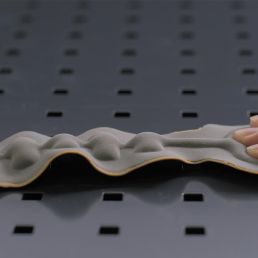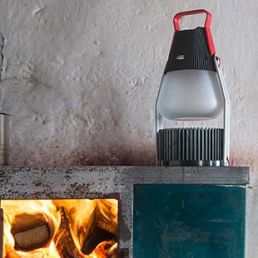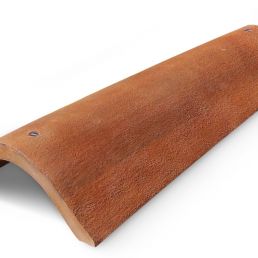
Bioplastics from old bakery goods
Scientists make basic chemical from unsold bread
30 August 2021
In Germany, more than 500,000 metric tons of old baked goods are produced each year which, without additional processing, are not suitable for further consumption or as animal feed. Until now, their use has been primarily energetic, for example in combustion processes or in biogas plants. Old bakery products such as bread, rolls or cakes contain large quantities of starch. The starch can be converted into the basic chemical HMF, which offers potential for a wide range of applications. Scientists at the Fraunhofer WKI in Braunschweig and at the University of Hohenheim have succeeded in extracting hydroxymethylfurfural (HMF) from old baked goods. With HMF, a starting material is available that can, for example, replace formaldehyde in bio-based adhesives.
Reversible loosening for self-healing properties
The project team at the University of Hohenheim developed a process for the so-called hydrothermal treatment of old bakery products, through which moist biomasses are converted under heat and slightly increased pressure. From the old bakery products and the starch contained therein in large quantities, HMF is created in aqueous solution and carbon. The process parameters, such as pH value, temperature and duration, are selected in such a way as to achieve the highest possible yields of HMF. Carbon is produced as a by-product of the hydrothermal treatment. It can be used as a biofuel or as soil fertilizer. Simultaneously, it is a good adsorbent and can therefore be utilized as activated carbon.

“Here at the Fraunhofer WKI, our task was to isolate the HMF from the aqueous solution and to process it further,“ said Dr. Steven Eschig (Project Manager at the Fraunhofer WKI). He and his team discovered that methyl isobutyl ketone (MIBK) works better as an extraction agent than chloroform (CHCI3) and that the addition of sodium chloride has a positive effect on the quantity extracted. In addition, they were able to prepare and characterize polyesters using furandicarboxylic acid.
HMF is a versatile starting material, as it can serve as a substitute for formaldehyde, for example in formaldehyde-free resins and bio-adhesives. Furthermore, it can form chemical bonds which can be dissolved again when the temperature is increased. This enables the production of materials with self-healing properties. The possibility of the reversible dissolution of the chemical bonds can also be used for switchable adhesives, as a result of which new recycling possibilities are created.
Via chemical modifications, so-called dialcohols (reductive) or dicarboxylic acid (oxidative) can be obtained from HMF. They can be used as building blocks for polymers, for example in the manufacture of coatings or fibers. The production of the plastic polyethylene furandicarboxylate (PEF) as a PET substitute has already been tested. PEF made from renewable raw materials is not only ecologically advantageous; it is also lighter and more durable and therefore of great interest to the beverage industry.
images: The basic chemical HMF is obtained from old bakery products (upper image). Lower image: HMF as a brown aqueous solution and as a brownish solid and carbon (here in powder form). HMF can be further processed to create, among other things, polyester resins. These can be used to produce aqueous polyurethane dispersions (white liquid) (credit: Manuela Lingnau, Fraunhofer WKI)
Ecoblaq molecular wood colours
23 March 2024
Ecoblaq is a molecule manipulation method, a natural chemical reaction, making…
Natural fiber reinforced car seat
22 October 2023
The focus of the project "Design for Recycling" is a seat shell that is made…
MotorSkins morphing textiles
19 April 2022
Berlin based start-up MotorSkins designs and produces textiles with embedded…
3D Pioneers Challenge 2022
15 December 2021
The 3D Pioneers Challenge 2022 adresses tech pioneers who pave the way for…
IGNIS – Light from waste heat energy
12 August 2020
The availability of affordable, independent and, above all, clean electrical…
Brake disc with reduced fine dust
21 April 2021
Fine dust endangers our health. One of the main sources is traffic, especially…
Texoversum
15 July 2023
With the "Texoversum", Reutlingen University has put into operation a training…
Invisible Terracotta Solar Rooftile
10 May 2023
The family-run business Dyaqua has developed a technology to integrate a…
Xarvio – Digital Farming
8 January 2021
BASF Digital Farming GmbH has received the renowned Crop Science Award for the…








